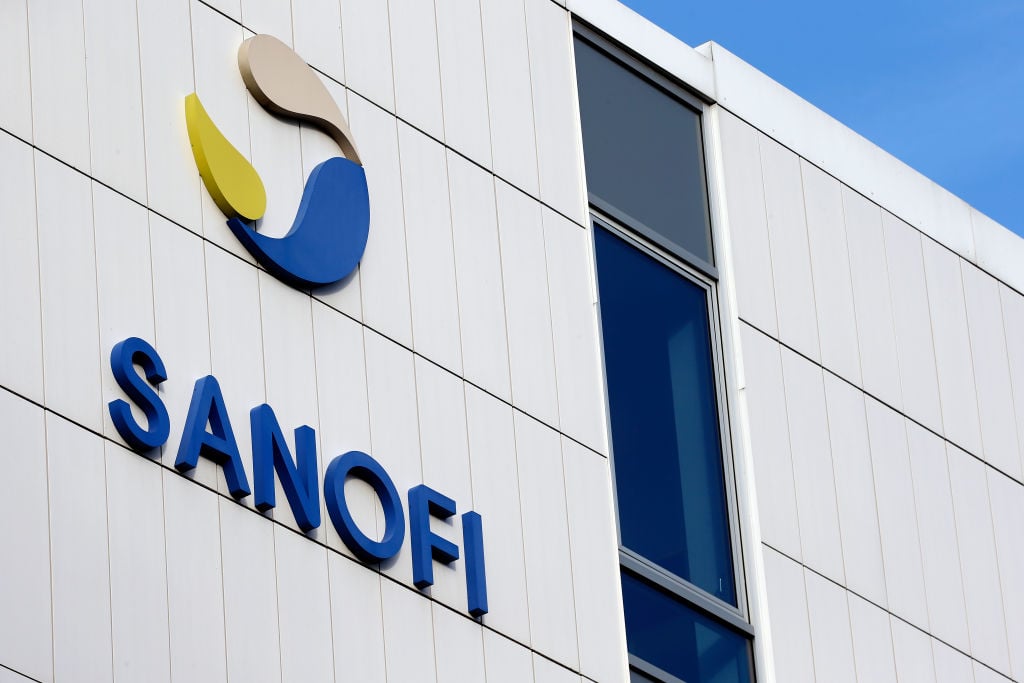预约演示
更新于:2025-05-07
F8
更新于:2025-05-07
基本信息
别名 AHF、Antihemophilic factor、Coagulation factor VIII + [14] |
简介 Factor VIII, along with calcium and phospholipid, acts as a cofactor for F9/factor IXa when it converts F10/factor X to the activated form, factor Xa. |
关联
48
项与 F8 相关的药物靶点 |
作用机制 F8刺激剂 |
在研适应症 |
非在研适应症- |
最高研发阶段批准上市 |
首次获批国家/地区 欧盟 [+3] |
首次获批日期2022-08-24 |
靶点 |
作用机制 F8刺激剂 [+1] |
在研适应症 |
非在研适应症- |
最高研发阶段批准上市 |
首次获批国家/地区 俄罗斯 |
首次获批日期2014-01-01 |
80
项与 F8 相关的临床试验NCT06754852
A Phase 1/2 Study to Assess the Safety, Tolerability, Pharmacokinetics, Pharmacodynamics, and Efficacy of HMB-002 in Participants With Von Willebrand Disease (Velora Pioneer)
This is a first-in-human (FIH), Phase 1/2, open-label, dose escalation, safety, tolerability, pharmacokinetic (PK), pharmacodynamic (PD), and efficacy study of HMB-002 in participants with VWD. Part A of the study involves a single ascending dose (SAD) design to establish safety, tolerability, PK, and PD effect. In Part B of the study, the safety and tolerability of repeat dosing will be established prior to cohort expansion to explore efficacy.
开始日期2025-02-06 |
申办/合作机构 |
NCT06297486
A Phase 3, Single-arm, Open-label, Multicenter Study of the Safety and Efficacy of Dirloctocogene Samoparvovec (SPK 8011, Adeno-associated Viral Vector With B-domain Deleted Human Factor VIII Gene) in Adults With Severe or Moderately Severe Hemophilia A
The purpose of this study is to evaluate the efficacy of SPK-8011 in preventing bleed episodes compared with FVIII prophylaxis in participants with hemophilia A without FVIII inhibitors on routine FVIII prophylaxis.
开始日期2024-03-13 |
申办/合作机构 |
NCT06238908
Clinical Study on the Safety and Efficacy of an Intravenous Infusion of NGGT003 in the Treatment of Hemophilia A
This is an early phase 1, open-label, single-center, dose-escalation pilot trial to evaluate the safety and efficacy of an intravenous infusion of NGGT003 in hemophilia A patients. NGGT003 uses adeno-associated virus (AAV) as a vector, carrying a liver specific promoter and codon optimized human FVIII gene B domain deletion mutant (hFVIII BDD), and expresses human FVIII protein in the liver through intravenous injection.
开始日期2024-01-17 |
申办/合作机构 |
100 项与 F8 相关的临床结果
登录后查看更多信息
100 项与 F8 相关的转化医学
登录后查看更多信息
0 项与 F8 相关的专利(医药)
登录后查看更多信息
16,526
项与 F8 相关的文献(医药)2025-12-31·Gynecological Endocrinology
Effect over coagulation and fibrinolysis parameters of a prolonged release 24 + 4 daily use regime contraceptive formulation containing 2 mg dienogest/0.02 mg ethinylestradiol
Article
作者: Angulo, Alicyoy ; Colli, Enrico ; Regidor, Pedro-Antonio
2025-12-31·Future Science OA
Atypical acquired hemophilia linked with primary biliary cholangitis: a unique case presentation
Article
作者: Kallel, Naourez ; Kallel, Faten ; Hachicha, Hend ; Frikha, Imen ; Medhaffar, Moez ; Megdiche, Fatma ; Masmoudi, Hatem ; Elloumi, Moez ; Charfi, Maha ; Siala, Nour ; Krichen, Imen ; Kallel, Choumous
2025-12-01·Molecular Biology Reports
Integrated physiological characterisation and transcriptomics reveals drought tolerance differences between two cultivars of A. sinensis at seedling stage
Article
作者: Zhang, Jing ; Kang, Shuqi ; Liu, Tianle ; Zhang, Shuai ; Li, Mengfei ; Yang, Baimei ; Guo, Liu ; Jin, Ling ; Zhu, Tiantian ; Ma, Xiaohui
676
项与 F8 相关的新闻(医药)2025-04-24
Sanofi said that the launch of Dupixent in COPD is off to a promising start. The company called 2025 an 'inflection year," for uptake of the product in the indication.
As Sanofi anticipates sales of immunotherapy juggernaut Dupixent reaching a major $22 billion by the end of the decade, fulfilling that goal will hinge on its uptake in chronic obstructive pulmonary disorder (COPD).So far, so good.After gaining FDA approval in the indication in September of last year, the company is on a “record-setting pace,” as it relates to coverage, according to Brian Foard, Sanofi’s head of specialty care, speaking at the company’s first quarter conference call.Medicare and commercial coverage are at 90% and 88% respectively, Foard said, adding that “as you look at initiations we’re seeing, it’s our most rapid respiratory initiation launch so far.”COPD represents a significant opportunity for Sanofi and its U.S. drug partner Regeneron as Dupixent is the first biologic approved for the condition, which is the fourth-leading cause of death in the world. With many patients having “resigned themselves to their condition,” according to Sanofi CEO Paul Hudson, the company is busy educating pulmonologists and patients about the benefits of the treatment.Sanofi has launched Dupixent for COPD in eight countries, said Hudson, who added that 2025 will be the "inflection year," for the treatment in the indication. Last week, the FDA approved Dupixent in its seventh indication—the hives disorder chronic spontaneous urticaria (CSU). The company expects another nod this year for Dupixent to treat the skin disease bullous pemphigoid (BP).The company reported Q1 sales of Dupixent at 3.5 billion euros ($4 billion), which was an impressive increase of 20% year over year. In 2024, Dupixent sales came in at $14.1 billion, which was an increase of 22% from 2023.Dupixent’s trajectory contributed heavily to Sanofi’s strong quarterly performance. The company racked up sales of 9.9 billion euros ($11.3 billion) in the first quarter, which was a 10% increase year-over-year. Also playing a role was hemophilia A treatment Altuviiio, which made a 100% leap in sales to 251 million euros ($285 million) and “has the potential to become our next blockbuster this year,” Hudson said.Hudson added that Altuviiio, which was approved in early 2023, is “benefiting from patient switches,” as they move away from factor VIII replacement medicines, such as the company’s aging Eloctate, which saw a 21% decline in sales to 70 million euros ($80 million) in the quarter.Meanwhile, sales of Sanofi’s factor VIX replacement treatment Alprolix—which was approved for hemophilia B patients three months before Eloctate in 2014—grew by 20% to 160 million euros ($182 million).

上市批准免疫疗法临床结果生物类似药
2025-04-24
4月22日,BioBAY园内企业华毅乐健宣布,自主研发的GS1191-0445注射液临床3期试验全国首例受试者用药,在中国医学科学院血液病医院顺利实施。这一重要时刻,标志着该药物的临床3期研究迈出了关键的第一步。GS1191-0445注射液是一款用于血友病A的腺相关病毒(AAV)基因治疗在研药物。通过单次静脉输注GS1191-0445注射液,将将人凝血因子VIII基因导入血友病A患者体内,从而提高并长期维持患者体内凝血因子水平,以期达到“一次给药、长期有效”的对因治疗及预防出血的效果。该药物的3期临床试验由中国医学科学院血液病医院张磊教授牵头,国内10余家分中心共同参与。张磊教授团队凭借丰富的临床试验经验,高效推进了项目落地。此次首例用药的成功完成,为后续临床试验的顺利开展奠定了坚实的基础,更为相关疾病的治疗带来了新的希望和曙光,有望为患者提供突破性的治疗选择。从华毅乐健临床团队获悉,前期1/2期试验数据积极:受试者凝血因子VIII活性水平在给药后显著提升并长期持续稳定表达,年化出血率(ABR)大幅下降,截至52周无自发出血事件发生,且无需FVIII因子重组蛋白输注。此外,试验过程中未报告研究药物相关的严重不良反应,初步验证了药物的安全性和有效性。这些积极的试验数据,为GS1191-0445注射液的临床应用提供了有力支持。目前,GS1191-0445的3期临床试验中心正在迅速启动。▌文章来源:华毅乐健责编:何文正审核:任旭推荐阅读研发动态丨盛迪亚夫那奇珠单抗新适应症获批,为强直性脊柱炎成人患者提供治疗新选择研发动态丨士泽生物:通用细胞治疗帕金森病获中美药监局完全批准开展注册临床试验,将于国内顶级医院神经内外科开展研发动态丨中国首款saRNA药物获批临床!中美瑞康RAG-1C开启PVR治疗新篇章
临床3期基因疗法临床结果
2025-04-23
STOCKHOLM, April 23, 2025 /PRNewswire/ -- Sobi® (STO: SOBI) presents clinical data aimed at updating the global haemophilia community attending this year's WFH 2025 Comprehensive Care Summit in Dubai from the 23 – 25 April. New and updated outcomes and analyses will be presented from the XTEND phase 3clinical program testing the effectiveness of Altuvoct® (efanesoctocog alfa) treatment for haemophilia A, including updates on patients' joint health and surgical outcomes in patients.
"At WFH 2025 CCS, Sobi will present highlights from the XTEND phase 3 program and discuss the new treatment paradigm with FVIII levels in the non-haemophilia range. Sharing these clinical outcomes with the wider haemophilia community will help to ensure the latest treatment approaches are widely known and understood," said Lydia Abad-Franch, MD, MBA, Head of Research, Development, and Medical Affairs (RDMA), and Chief Medical Officer at Sobi.
Key data to be presented at WFH 2025 Comprehensive Care Summit, Dubai, UAE
Altuvoct® (efanesoctocog alfa)
About efanesoctocog alfa
Efanesoctocog alfa [Antihemophilic Factor (Recombinant), Fc-VWF-XTEN Fusion Protein] (formerly BIVV001) is a novel and significant part of the week factor VIII therapy. It has the potential to deliver near-normal factor activity levels for significant parts of the week, improving bleed protection in a once-weekly dose for people with haemophilia A. Efanesoctocog alfa builds on the innovative Fc fusion technology by adding a region of von Willebrand factor and XTEN® polypeptides to extend its time in circulation. It is the only therapy that has been shown to break through the von Willebrand factor ceiling, which imposes a half-life limitation on current factor VIII therapies. It was approved as ALTUVIIIO™ [Antihemophilic Factor (Recombinant), Fc-VWF-XTEN Fusion Protein-ehtl] by Sanofi in the US in February 2023.
About the Sobi and Sanofi collaboration
Sobi and Sanofi collaborate on the development and commercialisation of Alprolix® and Elocta®/Eloctate®. The companies also collaborate on the development and commercialisation of efanesoctocog alfa, referred to as ALTUVIIIO™ in the USA and ALTOVUCT in Europe. An investigational factor VIII therapy with the potential to provide high sustained factor activity levels with once-weekly dosing for people with haemophilia A. Sobi has final development and commercialisation rights in the Sobi territory (essentially Europe, North Africa, Russia and most Middle Eastern markets). Sanofi has final development and commercialisation rights in North America and all other regions in the world excluding the Sobi territory.
Sobi®
Sobi is a specialised international biopharmaceutical company transforming the lives of people with rare diseases. Providing sustainable access to innovative medicines in the areas of haematology, immunology and specialty care, Sobi has approximately 1,800 employees across Europe, North America, the Middle East and Asia. In 2022, revenue amounted to SEK 18.8 billion. Sobi's share (STO:SOBI) is listed on Nasdaq Stockholm. More about Sobi at sobi.com, LinkedIn and YouTube.
Contact
For details on how to contact the Sobi Investor Relations Team, please click here. For Sobi Media contacts, click here.
This information was brought to you by Cision
The following files are available for download:
WANT YOUR COMPANY'S NEWS FEATURED ON PRNEWSWIRE.COM?
440k+
Newsrooms &
Influencers
9k+
Digital Media
Outlets
270k+
Journalists
Opted In
GET STARTED
临床3期上市批准生物类似药
分析
对领域进行一次全面的分析。
登录
或

生物医药百科问答
全新生物医药AI Agent 覆盖科研全链路,让突破性发现快人一步
立即开始免费试用!
智慧芽新药情报库是智慧芽专为生命科学人士构建的基于AI的创新药情报平台,助您全方位提升您的研发与决策效率。
立即开始数据试用!
智慧芽新药库数据也通过智慧芽数据服务平台,以API或者数据包形式对外开放,助您更加充分利用智慧芽新药情报信息。
生物序列数据库
生物药研发创新
免费使用
化学结构数据库
小分子化药研发创新
免费使用





